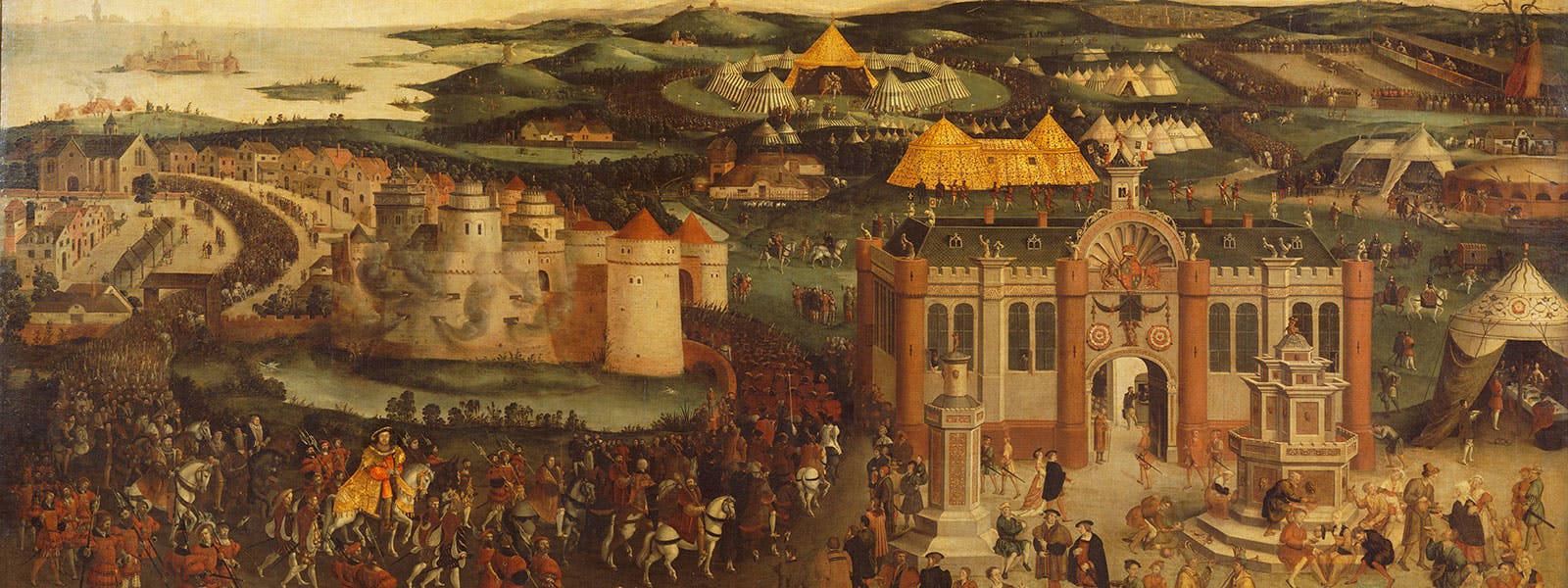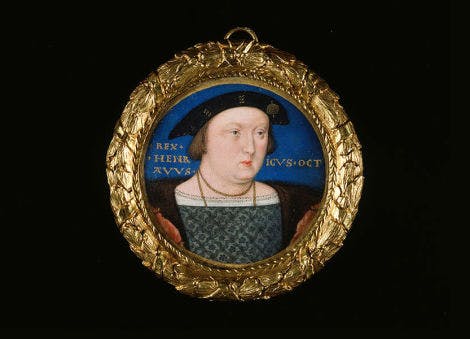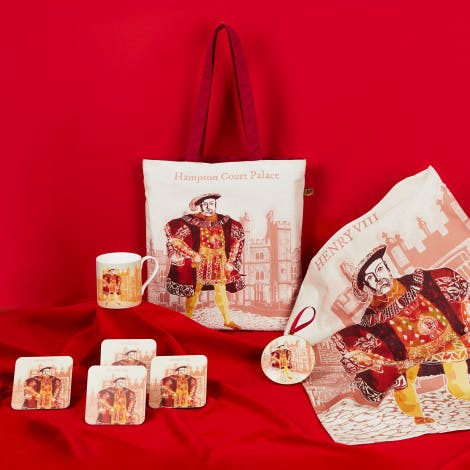
A special exhibition of dazzling Tudor treasures celebrating the 500th anniversary of the Field of Cloth of Gold
Skip the event ticket details and go to event summary.
When
20 April - 05 September 2021Exhibition information
This exhibition is closed.
This exhibition immersed visitors in Tudor history and reunited stunning works of art, gold, weapons, manuscripts and clothing from the Field of Cloth of Gold, Henry VIII's legendary encounter with his great rival François I of France.
A never-before-seen tapestry was also on display, which shed rare light on people of colour in the Tudor period.
A Tudor spectacle
The Field of Cloth of Gold, an 18-day meeting between Henry VIII and François I in 1520, was unparalleled in its lavish demonstration of wealth and power.
Inside huge temporary palaces, under tents made of luxurious cloth of gold or on the specially constructed tiltyard, the two competitive kings and their courtiers jousted and wrestled, hosted great banquets and exchanged expensive gifts. Wine flowed from the fountains and a 'dragon' flew above the festivities.
Top image: The Field of the Cloth of Gold c. 1545. © Royal Collection Trust / Her Majesty Queen Elizabeth II 2019
This is Tudor history at its most dramatic, dazzling best.
Tracy Borman, Joint Chief Curator at Historic Royal Palaces

Gold and Glory exhibition
This content is hosted on YouTube
This content may be using cookies and other technologies for which we need your consent before loading. To view the content, you need to enable cookies for "Targeting Cookies & Other Technologies".
Manage CookiesReuniting 16th-century treasures after 500 years

The exhibition took place in the rooms at Hampton Court Palace that were used by the mastermind of the event, Cardinal Thomas Wolsey, and combined significant artefacts from the Field of Cloth of Gold with dazzling treasures from Henry's Tudor court and François' Valois court.
Key items included the spectacular Stonyhurst vestments — woven from luxurious cloth of gold and selected by Henry for use at the religious services held near Calais and the Wolsey's Book of Hours.
The resulting display evoked the political tensions that preceded this defining moment in Henry VIII's reign, as well as the ostentation of the event itself.
Image: Henry VIII by Lucas Horenbout 1526-7. Royal Collection Trust / © Her Majesty Queen Elizabeth II 2019
Never-before-seen tapestry to go on display
As well as a treasure trove of precious objects from the rival courts of Tudor England and Valois France, the exhibition featured a unique tapestry that went on public display for the first time in its history.
Manufactured in Tournai in the 1520s, the richly woven textile depicts a bout of wrestling at the Field of Cloth of Gold, and includes a black trumpeter among the brace of royal musicians.
This incredible object is one of only a handful of surviving early 16th century visual representations of people of colour at the European royal courts, and the only depiction of a black musician in attendance at the Field of Cloth of Gold.
Explore the Field of Cloth of Gold

Image: The Field of the Cloth of Gold c. 1545. © Royal Collection Trust / Her Majesty Queen Elizabeth II 2019
Explore what's on

- Things to see
Henry's Crown
Marvel at the sparkling re-creation of Henry VIII's Crown, on display in the Tudor apartments at Hampton Court Palace.
-
Wednesday to Saturday
- In line with palace opening hours
- Hampton Court Palace
- Included in palace admission (Members go free)

- Things to see
Henry VIII's Kitchens
Transport yourself back to the heyday of Tudor feasting and entertainment in Henry VIII's Kitchens at Hampton Court Palace.
-
Open
- In line with palace opening hours
- Hampton Court Palace
- Included in palace admission (Members go free)

- Things to see
Great Hall
Experience the splendour of the Tudor court in Henry VIII's Great Hall, complete with his magnificent tapestries.
- Open
- In line with palace opening hours
- Hampton Court Palace
- Included in palace admission (Members go free)
Browse more history and stories

The Field of Cloth of Gold
Henry VIII's historic meeting with his great rival François I in 1520 was a defining point in his reign

Katherine of Aragon
Katherine of Aragon was the first wife of Henry VIII. In her eyes, she was his only Queen.

Tudor food and eating
Royal food and table manners at the Tudor court
Shop online

Shop Six Wives of Henry VIII
'Divorced, Beheaded, Died: Divorced, Beheaded, Survived' - this best selling range is as colourful as it is informative.
From £15

Shops Arms & Armour
Discover our unique range of these meticulously crafted pieces, perfect for re-enactments and history lovers.
From £5.50

Shop Tudors
Find the perfect gift for collectors and history enthusiasts in our treasure trove of souvenirs inspired by this ever-fascinating dynasty.
From £3.00





